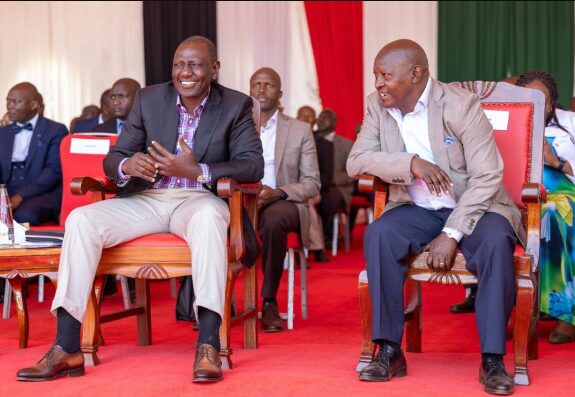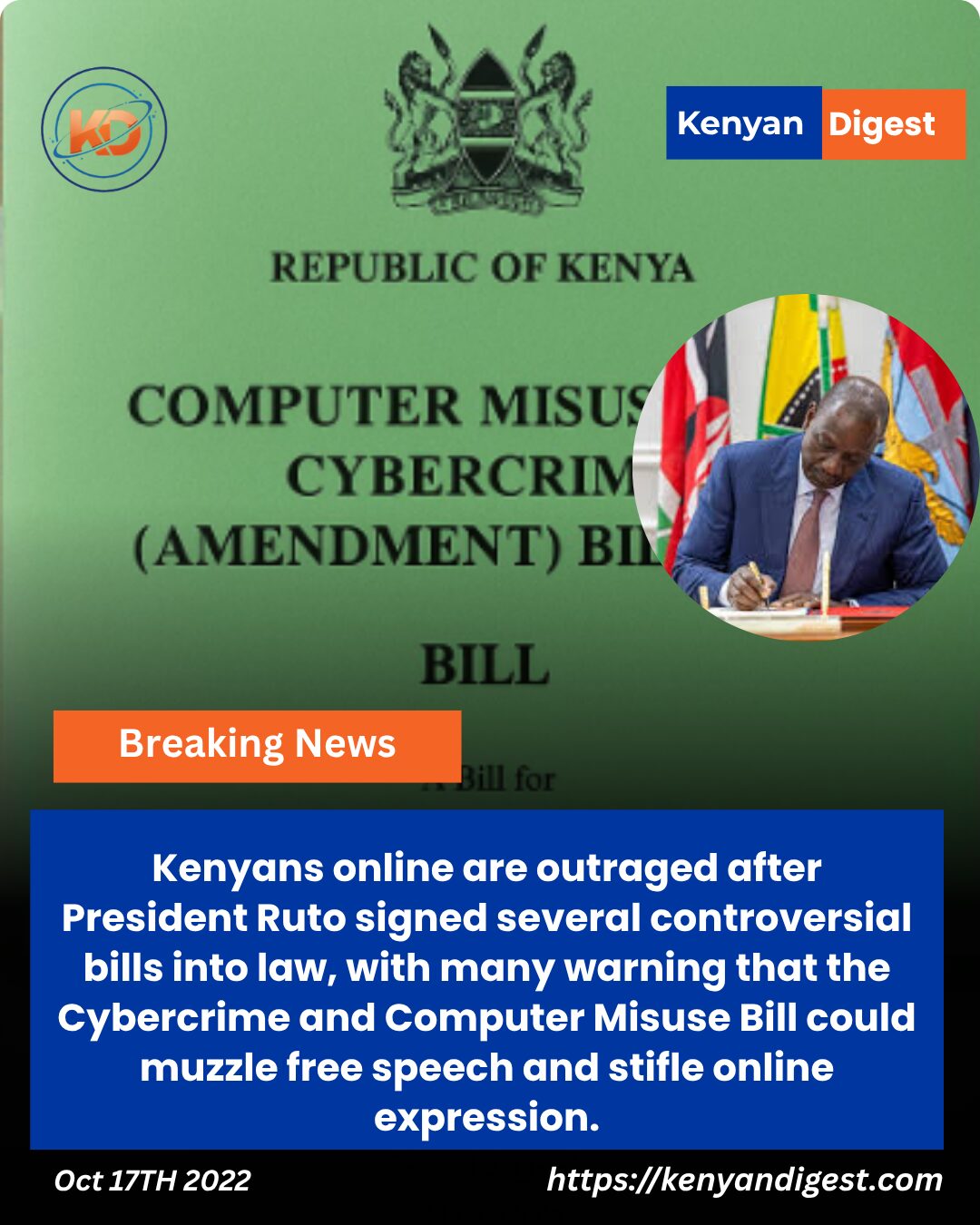The response was immediate and harsh when Nyeri Governor Mutahi Kahiga issued some controversial remarks against the late Raila Odinga. He addressed Kenyans on the death of Raila in a manner that displeased many Kenyans, who considered it offensive and very insensitive. The video was a viral trend that compelled leaders on both sides to react and rekindled a painful debate on politics, religion, and respect.
The timing of the comments could not have been worse for the president’s camp. Mount Kenya, which has previously served to place William Ruto in power, is no longer calm after the impeachment of former deputy president Rigathi Gachagua. People are dissatisfied with delayed growth and political apathy. The area is betrayed, and its trust in the State House is diminishing.

President William Ruto and Governor Mutahi Kahiga at a political event in Nyeri County. (Source: Bigstar News)
The Fallout and the Fear
As the mountain complains, the mood in Nyanza changes. Ever since the late Raila Odinga reached a consensus with the government to collaborate, new projects, appointments, and presidential visits have been experienced in the lakeside region. What once was the core of the opposition is now hugged in by the administration. Such a comparison has not gone unnoticed.
The outrage, thus, when it came to be said publicly by Kahiga, was more than an emotional release. ODM governors, through the leadership of Gladys Wanga, denounced the speech and wanted it tabled. The senators of the UDA, such as Samson Cherargei, demanded disciplinary action against the governor. The national discourse was transformed in a few hours, splitting the opinions of the population between indignation and conjecture.
A Perfect Distraction
Just a few minutes earlier, President Ruto had just signed the Computer Misuse and Cybercrimes Amendment Bill, which is a bill that provides the state with additional authority to monitor online accounts and online content. The digital rights groups cautioned that it was an assault on free speech. But when the nation was debating the statements of Kahiga, little was said about the new law.To communication strategists, the change of focus was drastic.
Political analysts started to question whether the uproar had become some kind of a welcome shield to the government. The administration was less questioned on the cyber law, and it was seen to be on the high moral ground, preaching tolerance and unity.

Ruto signing the computer misuse bill
Strategic Realignments
Kenyan politics thrives on optics. By remaining calm as the controversy raged, Ruto projected the image of a leader above the noise. Nyanza voters saw a president condemning divisive talk, while parts of the mountain saw one of their own isolated for his words. The optics placed Ruto at the center, the reconciler between two blocs that rarely see eye to eye.
Within UDA, quiet talk has begun about new political paths. With Raila’s passing, leaving ODM in transition, Ruto’s outreach toward Nyanza may not be a coincidence. Securing sympathy from Raila’s supporters, even partially, could become the foundation for the next electoral realignment.
The Larger Game
No one outside the inner circle can prove coordination between Kahiga’s remarks and any higher plan. Still, in Kenyan politics, coincidences often align with strategy. Every word, every crisis, and every apology can shift the balance of power. The Kahiga episode has already reshaped public sentiment, portraying Nyanza as dignified in grief, the mountain as divided, and the president as the steady hand between them.
Whether spontaneous or strategic, the remarks have become part of a much larger story: the slow redrawing of Kenya’s political map after Raila Odinga’s death. In that map, every outburst, every law, and every alliance seems to move one piece closer to the next big election.

The late Raila Odinga, William Ruto, and Kindiki attend the first joint Kenya Kwanza–ODM Parliamentary Group meeting. PHOTO/@TheODMparty/X

 Politics1 week ago
Politics1 week ago
 Entertainment1 week ago
Entertainment1 week ago
 Business News1 week ago
Business News1 week ago
 Business News35 minutes ago
Business News35 minutes ago








